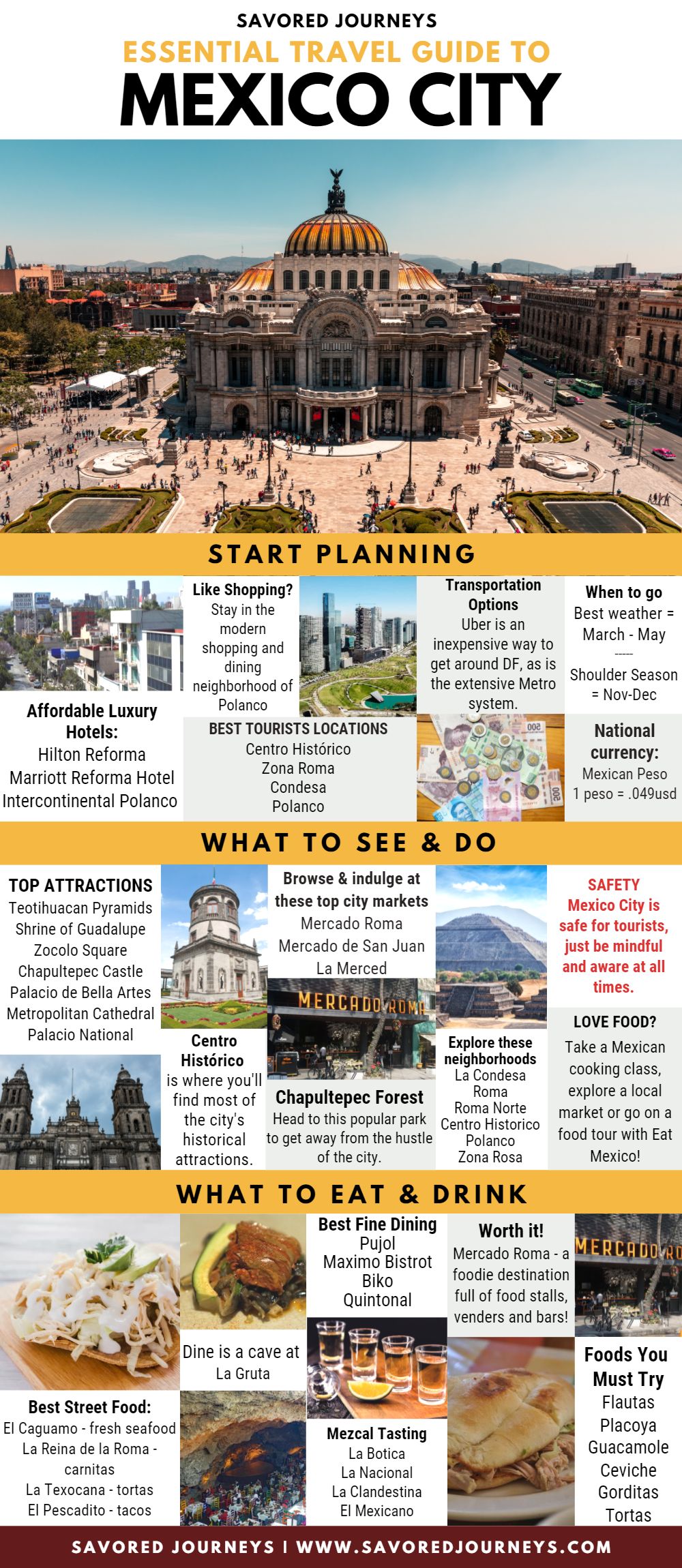
Mexico, a land of staggering diversity and captivating allure, beckons travelers with a potent blend of ancient history, pulsating modern culture, and breathtaking natural beauty. From the sun-drenched beaches of the Caribbean to the rugged mountains of the north, this vast nation offers an unforgettable journey for every kind of adventurer. Whether you dream of exploring the enigmatic ruins of Maya civilization, indulging in the fiery flavors of authentic cuisine, or simply soaking up the vibrant atmosphere of colonial towns, Mexico promises an experience that will linger long after you’ve departed.
This comprehensive travel guide will equip you with everything you need to plan your Mexican escapade, from its rich historical tapestry to practical tips for navigating this extraordinary country.
A Glimpse into Mexico’s Storied Past: Echoes of Civilizations

Related Articles about Mexico: A Tapestry of Ancient Wonders, Vibrant Culture, and Sun-Kissed Shores:
- Canada: A Traveler’s Grand Tapestry – From Majestic Peaks to Coastal Charms
- China: A Journey Through Time, Culture, and Unforgettable Landscapes
- The Land of the Long White Cloud: Your Ultimate Travel Guide to New Zealand
- A Traveler’s Handbook to Singapore: A Jewel of Southeast Asia
- The American Tapestry: A Comprehensive Travel Guide to the United States
Mexico’s history is a vibrant mosaic, shaped by powerful ancient civilizations, the arrival of European colonizers, and a persistent struggle for independence and identity. Understanding this past is key to appreciating the present-day richness of the country.
The Mesoamerican Civilizations laid the foundation for Mexico’s cultural heritage. The Olmecs, often called the "mother culture," flourished from 1500 to 400 BCE, leaving behind colossal stone heads that hint at their advanced artistry and societal structure. Later, the Maya, renowned for their sophisticated understanding of astronomy, mathematics, and hieroglyphic writing, built awe-inspiring cities like Chichen Itza and Palenque in the Yucatan Peninsula. Their intricate calendars and astronomical observatories remain a testament to their intellectual prowess.
The Teotihuacan civilization, peaking around 500 CE, constructed the monumental Pyramids of the Sun and Moon, a city that once rivaled Rome in size and influence. The Toltecs, followed by the Aztecs, rose to prominence in central Mexico, establishing their capital at the magnificent Tenochtitlan on an island in Lake Texcoco. Their empire, though relatively short-lived, was a formidable force, characterized by intricate social structures, advanced agriculture, and a complex religious system.
The arrival of Spanish conquistadors led by Hernán Cortés in 1519 marked a pivotal turning point. The fall of Tenochtitlan in 1521 ushered in the Colonial Era, a period of intense cultural exchange and subjugation. Spanish language, Catholicism, and architectural styles were imposed, but indigenous traditions and resilience also persisted, creating a unique mestizo culture. Magnificent colonial cities like Mexico City, Puebla, and Oaxaca emerged, showcasing stunning Baroque architecture and enduring traditions.
Mexico’s fight for Independence from Spain began in 1810 and culminated in 1821. The 19th century was a turbulent period, marked by internal conflicts, foreign interventions, and territorial losses. The Mexican Revolution (1910-1920) was a transformative struggle that reshaped the nation’s political and social landscape, leading to land reform and a renewed sense of national identity. The 20th century saw Mexico emerge as a modern nation, grappling with issues of economic development, social justice, and its unique place in the global arena.
Top Attractions: A Kaleidoscope of Experiences
Mexico’s attractions are as diverse as its landscapes, offering something to captivate every traveler’s imagination.
Ancient Wonders:
- Chichen Itza (Yucatan Peninsula): A UNESCO World Heritage site and one of the New Seven Wonders of the World, Chichen Itza is the iconic symbol of Maya civilization. Marvel at the majestic El Castillo pyramid, the Temple of the Warriors, and the Great Ball Court.
- Teotihuacan (near Mexico City): Stand in awe of the Pyramids of the Sun and Moon, and walk the Avenue of the Dead in this vast ancient city that predates the Aztecs.
- Palenque (Chiapas): Nestled within the lush rainforest, Palenque’s intricate stucco carvings and well-preserved temples offer a glimpse into the grandeur of Maya city-states.
- Tulum (Yucatan Peninsula): Perched dramatically on a cliff overlooking the turquoise Caribbean Sea, Tulum’s ancient fortress offers a breathtaking backdrop for exploring Maya history.

Vibrant Cities & Colonial Charm:
- Mexico City: A sprawling metropolis brimming with history, art, and culture. Explore the Zócalo (main square), the Metropolitan Cathedral, the National Palace, and the world-class museums like the National Museum of Anthropology. Wander through the colorful neighborhoods of Coyoacán and Roma.
- Oaxaca City: Renowned for its vibrant indigenous culture, artisanal crafts, and world-famous cuisine. Visit the Monte Albán ruins, explore the bustling markets, and savor mole and mezcal.
- San Miguel de Allende (Guanajuato): A picturesque colonial gem with cobblestone streets, vibrant bougainvillea, and a thriving arts scene. Its iconic Parroquia de San Miguel Arcángel is a sight to behold.
- Puebla: Famous for its Talavera pottery and delicious culinary heritage, Puebla boasts stunning colonial architecture and a rich history.
Sun-Kissed Beaches & Coastal Escapes:
- Cancún & Riviera Maya (Yucatan Peninsula): Offering world-class resorts, pristine white-sand beaches, and vibrant nightlife, Cancún is a popular choice. The Riviera Maya, stretching south, offers a more laid-back experience with destinations like Playa del Carmen, Tulum, and Akumal.
- Puerto Vallarta (Jalisco): Nestled on the Pacific coast, Puerto Vallarta offers a charming old town, beautiful beaches, and a lively culinary scene.
- Los Cabos (Baja California Sur): Where the desert meets the sea, Los Cabos is known for its dramatic rock formations, luxurious resorts, and excellent sport fishing.
- Huatulco (Oaxaca): A developing tourist destination with nine bays, offering a more eco-friendly and relaxed beach experience.
Natural Wonders:
- Copper Canyon (Chihuahua): A vast network of canyons larger and deeper than the Grand Canyon. Ride the El Chepe train for breathtaking vistas.
- Sumidero Canyon (Chiapas): Take a boat trip through this dramatic canyon, marveling at its towering cliffs and abundant wildlife.
- Hierve el Agua (Oaxaca): Witness petrified waterfalls and natural mineral pools with stunning views of the surrounding valleys.
Essential Travel Tips for a Smooth Journey
To make the most of your Mexican adventure, keep these practical tips in mind:
- Visa Requirements: Check the visa requirements for your nationality well in advance. Many nationalities can enter for tourism purposes without a visa for up to 180 days.
- Currency: The official currency is the Mexican Peso (MXN). US Dollars are widely accepted in tourist areas, but it’s advisable to carry Pesos for smaller purchases and local establishments. ATMs are readily available.
- Language: Spanish is the official language. While English is spoken in tourist areas, learning a few basic Spanish phrases will greatly enhance your experience and is appreciated by locals.
- Safety: Mexico is a large country, and safety varies by region. Stick to well-traveled tourist areas, be aware of your surroundings, avoid displaying expensive valuables, and use reputable transportation. Research specific destinations for the latest safety advice.
- Health: Consult your doctor about recommended vaccinations. Drink bottled water only, and be cautious with street food until your stomach adjusts.
- Tipping: Tipping is customary. For restaurants, 10-15% is standard. Tip hotel staff, tour guides, and taxi drivers as appropriate.
- Bargaining: In markets, bargaining is expected. Do so politely and respectfully.
- Electricity: Mexico uses 127V electricity with Type A and B plugs (similar to the US).
- Respect Local Customs: Be mindful of local customs and traditions, especially when visiting religious sites. Dress modestly when appropriate.
Accommodation Options: From Budget to Luxury
Mexico offers a wide spectrum of accommodation to suit every budget and travel style:
- All-Inclusive Resorts: Popular in beach destinations like Cancún and Riviera Maya, these resorts offer a convenient package including accommodation, meals, drinks, and activities.
- Boutique Hotels: Found in colonial cities and smaller towns, these charming hotels offer unique character, personalized service, and often a sense of local immersion.
- Hostels: An excellent option for budget travelers and solo adventurers, hostels provide dormitory-style rooms and a social atmosphere.
- Vacation Rentals (Airbnb, VRBO): Ideal for families or longer stays, rentals offer more space, privacy, and the option to cook your own meals.
- Luxury Hotels & Villas: For those seeking indulgence, Mexico boasts world-class luxury hotels and private villas with exceptional amenities and service.
- Casas de Huéspedes (Guesthouses): A more local and affordable option, these simple accommodations offer a glimpse into Mexican family life.
Transportation: Navigating the Mexican Landscape
Getting around Mexico can be an adventure in itself, offering various convenient and cost-effective options:
- Flights: For long distances between major cities, flying is the most efficient option. Major airlines like Aeromexico, Volaris, and Viva Aerobus operate domestic routes.
- Buses: Mexico has an extensive and efficient bus network. First-class buses (e.g., ADO, ETN) are comfortable, air-conditioned, and ideal for intercity travel. Second-class buses are more basic but cheaper.
- Rental Cars: Renting a car offers flexibility, especially for exploring off-the-beaten-path destinations. However, be prepared for varying road conditions and driving styles. It’s advisable to have an International Driving Permit.
- Taxis & Ride-Sharing: Taxis are readily available in cities. Agree on a fare before starting your journey or ensure the meter is used. Ride-sharing services like Uber are available in many major cities.
- Metro: Mexico City has an extensive and affordable metro system, a great way to navigate the capital.
- Ferries: Ferries are used to access islands like Cozumel from the mainland.
Best Time to Visit: Embracing Mexico’s Climate
Mexico’s diverse geography means its climate varies significantly by region. Generally, the dry season (December to April) is considered the best time to visit most of the country, offering pleasant temperatures and sunny skies.
- December to February: This is peak season for many tourist destinations, with cooler temperatures in central Mexico and pleasant warmth on the coasts.
- March to April: Shoulder season, with warm temperatures and fewer crowds than the winter months. The Yucatan Peninsula experiences spring break during this time.
- May to October: This is the rainy season, characterized by higher humidity and the possibility of afternoon thunderstorms. However, rain is often short-lived, and you can find good deals during this period. The Caribbean coast can experience hurricanes from June to November.
- September to October: This period can be particularly wet and prone to hurricanes on the Gulf and Caribbean coasts.
Regional Considerations:
- Central Mexico (Mexico City, Puebla, Oaxaca): Pleasant year-round, with cooler temperatures from November to February and warmer months from March to May.
- Yucatan Peninsula (Cancún, Riviera Maya, Chichen Itza): Hot and humid year-round. The dry season (December-April) is ideal for beach vacations.
- Pacific Coast (Puerto Vallarta, Los Cabos): Warm and sunny year-round, with the hottest months being July and August. The rainy season runs from June to October.
- Northern Mexico: Can experience extreme temperatures, with hot summers and cold winters.
In conclusion, Mexico is a country that rewards exploration and embraces visitors with open arms. Its rich history, vibrant culture, stunning landscapes, and warm hospitality combine to create a truly unforgettable travel experience. By understanding its past, preparing with practical tips, and choosing the right time to visit, you are sure to embark on a journey filled with discovery, wonder, and delicious flavors.





